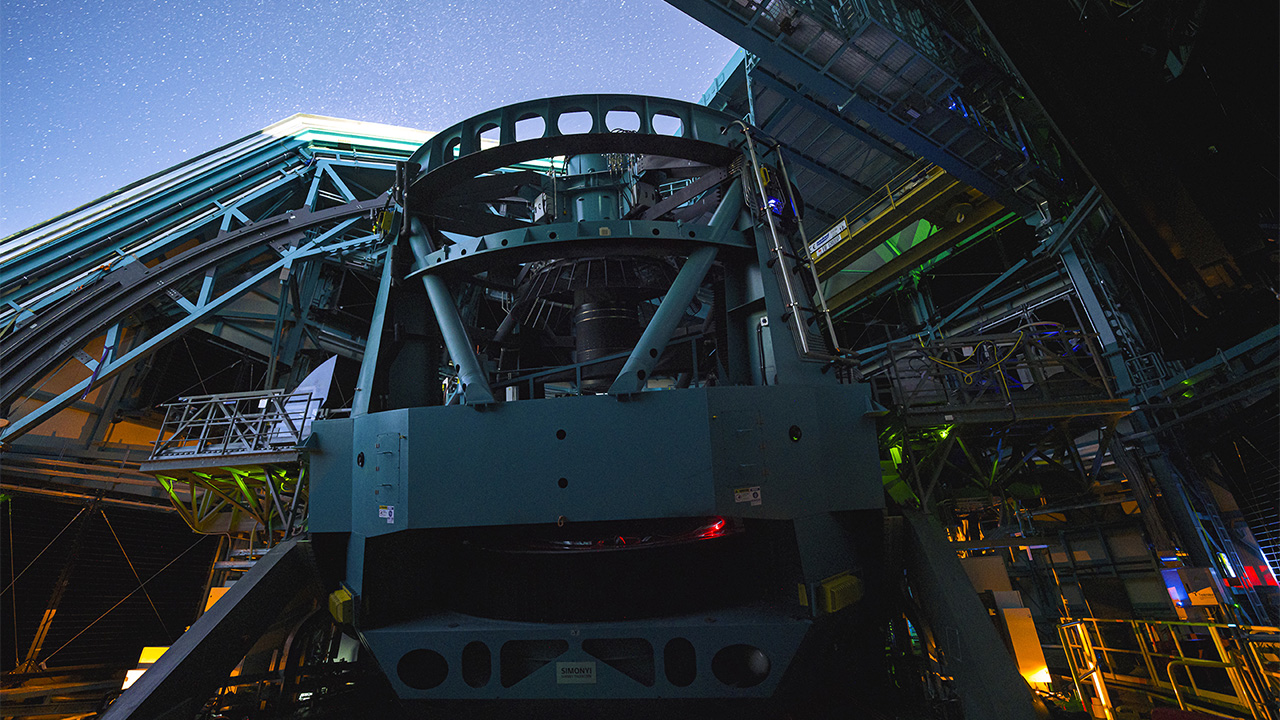NAOJ Researchers Contribute to Launch of Vera C. Rubin Observatory
| Topics

The Vera C. Rubin Observatory released its first images taken with the world’s largest digital camera on June 23, 2025 (local time). This marks the beginning of the Legacy Survey of Space and Time (LSST), a large-scale imaging project. Many Japanese researchers, including ones from the National Astronomical Observatory of Japan (NAOJ), are involved in LSST, and new scientific discoveries are expected through collaboration with the Subaru Telescope.
NSF-DOE Vera C. Rubin Observatory, or simply the Rubin Observatory, is a next-generation astronomical facility led by the United States (note) and located on Cerro Pachón in Chile. Its 8.4-meter optical-infrared telescope, paired with the 3.2-gigapixel LSST Camera, provides the widest field of view ever achieved by a telescope of its class—wide enough to capture an area of the sky equivalent to 45 full moons in a single exposure.
Starting in late 2025, the LSST project will systematically image the entire southern sky (about 20,000 square degrees) in visible to near-infrared wavelengths over a 10-year period. This ambitious survey will collect a massive amount of data and is expected to lead to discoveries across a wide range of fields, including solar system small bodies, galaxies, supernovae, and dark matter.
Japanese researchers are playing key roles in this international project. Japan’s astronomy community has long led the field of wide-field imaging surveys, particularly through Hyper Suprime-Cam (HSC) on the Subaru Telescope. Thanks to their expertise, as well as contributions of Subaru Telescope observing time, Japanese researchers have been recognized as official LSST contributors. From NAOJ, Professor Satoshi Miyazaki, Associate Professors Hisanori Furusawa and Yousuke Utsumi, and Research Engineer Michitaro Koike are leveraging their experience with HSC’s development, operations, and data analysis to support LSST’s success. As a result of these contributions, Japanese researchers have been granted prioritized access to LSST data and have already begun new research in preparation for the survey.
Meanwhile, the Subaru Telescope began operations in 2025 with its new Prime Focus Spectrograph (PFS), a wide-field multi-object spectrograph. With LSST specializing in imaging and Subaru Telescope now equipped with cutting-edge spectroscopic capabilities, this powerful partnership is poised to open new frontiers in astronomy.
Associate Professor Utsumi reflects on this milestone: “The start of LSST observations marks a transformative milestone for wide-field survey astronomy and time-domain science. I joined the HSC development team more than 15 years ago, and have been involved in LSST for eight years. It’s deeply moving to see over two decades of technological advancement and international collaboration—centered around Subaru Telescope and the U.S. scientific community—culminate in the creation of this new ‘eye’ for humanity. I look forward to the new discoveries and scientific breakthroughs LSST will bring.”

(note) NSF-DOE Vera C. Rubin Observatory is funded by the U.S. National Science Foundation and the U.S. Department of Energy’s Office of Science.